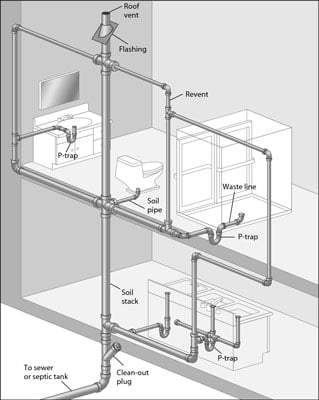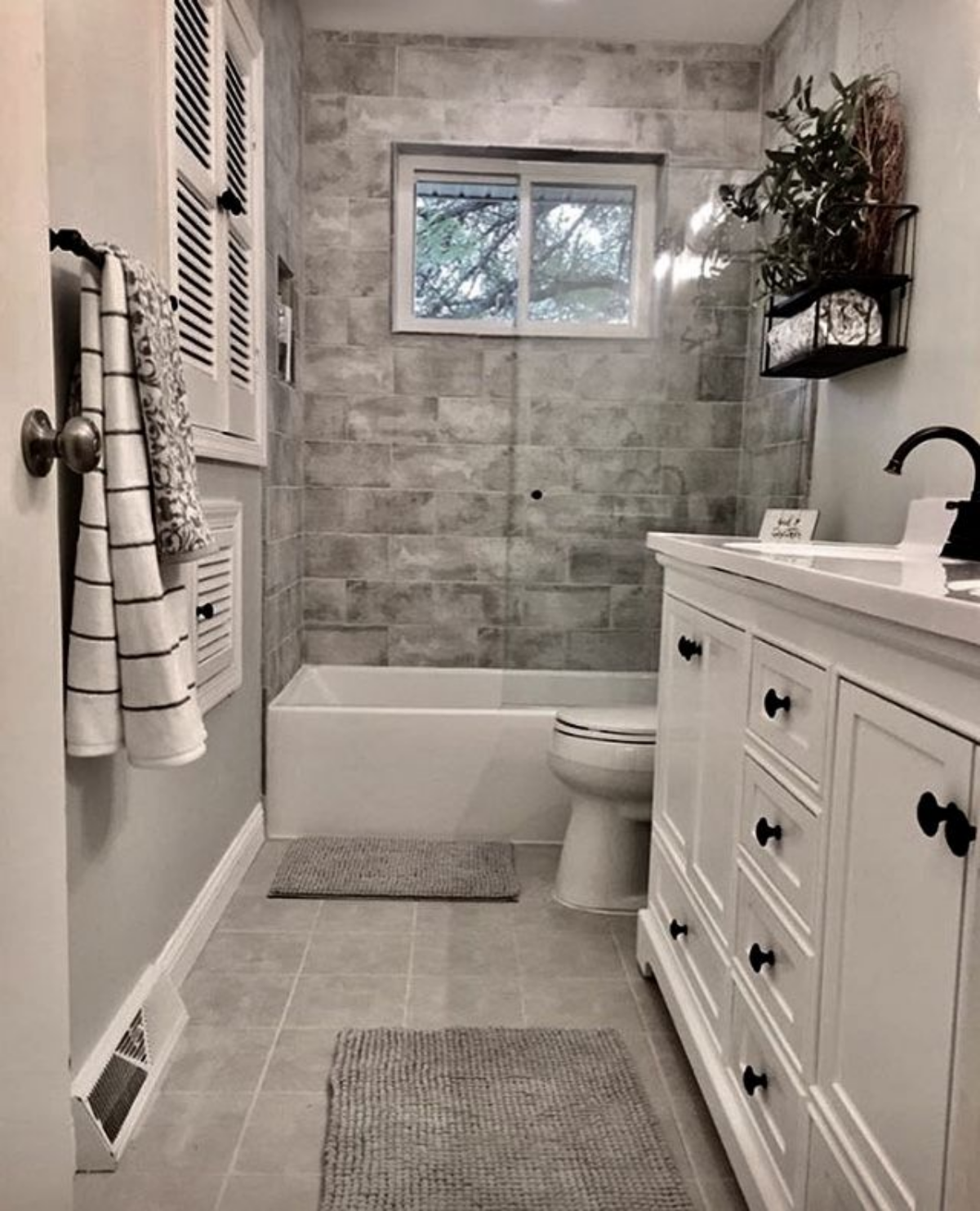Grasping The Value of Correct Ventilation in Plumbing Systems
Grasping The Value of Correct Ventilation in Plumbing Systems
Blog Article
We have found this post pertaining to What Is A Plumbing Vent & How Do They Work? listed below on the net and thought it made good sense to write about it with you on this page.

Proper air flow in pipes systems is typically neglected, yet it is critical for keeping the capability and safety of your home's pipes. Air flow assists control atmospheric pressure, protect against the accumulation of harmful gases, and make sure the reliable removal of waste. In this guide, we will certainly discover the significance of proper plumbing ventilation, how it functions, and the advantages it brings to your pipes system.
Comprehending Air Flow in Plumbing
Air flow in pipes refers to the network of pipes that allow air to move via the drain system. These vents serve numerous objectives, including regulating air pressure within the pipelines, stopping sewage system gases from entering the home, and helping in the smooth circulation of wastewater.
How Air Flow Works in Pipes Solutions
Air Pressure Policy
Proper air flow preserves balanced atmospheric pressure within the pipes system. When water moves through pipelines, it displaces air. Without sufficient air flow, this variation can produce unfavorable stress, leading to slow down drains pipes or siphoning of water from catches, which can cause undesirable smells to permeate into the home.
Protecting Against Sewer Gas Accumulation
One of the most vital functions of pipes vents is to stop sewer gases, such as methane and hydrogen sulfide, from gathering within the home. These gases can present severe wellness dangers and are highly flammable. Vent pipelines permit these gases to escape securely outside.
Aiding in Waste Removal
Air flow helps in the effective elimination of wastewater by stopping airlocks in the drain system. When air can flow easily through the vents, it enables water and waste to stream efficiently with the pipelines, minimizing the danger of blockages and back-ups.
Types of Plumbing Vents
Main Heap Vent
The main stack air vent, likewise called the air vent stack, is the key vent in a plumbing system. It prolongs from the main drain align with the roofing, allowing gases to run away and fresh air to get in the system.
Branch Vent
Branch vents connect to the main pile air vent and serve private components, such as sinks, bathrooms, and showers. These vents ensure that each fixture has appropriate ventilation to function effectively.
Air Admittance Shutoff (AAV).
An Air Admittance Shutoff (AAV) is a one-way shutoff that allows air to go into the pipes system without the requirement for a traditional vent pipe extending through the roof. AAVs are frequently used in remodellings or areas where setting up a conventional vent is unwise.
Signs of Poor Ventilation in Pipes.
Slow Draining Fixtures.
If your sinks, tubs, or commodes are draining gradually, it could be a sign of bad ventilation. Poor air flow can create a vacuum cleaner effect, making it challenging for water to drain pipes effectively.
Gurgling Sounds.
Gurgling audios coming from drains are typically a result of air being drawn with water catches because of adverse pressure in the pipelines. This is a clear indication of inadequate air flow.
Unpleasant Odors.
Sewage system odors inside your home are a red flag that your plumbing system is not effectively ventilated. This might suggest that sewage system gases are not being effectively aired vent outside, causing possibly hazardous problems.
Common Ventilation Errors.
Insufficient Vent Sizing.
Using small air vent pipes can result in poor air flow and stress discrepancies in the system. It's important to make use of vents that fulfill the certain requirements of your plumbing system.
Improper Vent Placement.
Putting vents also much from the components they offer can decrease their efficiency. Appropriate placement makes sure that air can move openly and effectively through the system.
Ignoring Code Needs.
Building codes provide specific standards for plumbing air flow. Overlooking these codes can lead to a system that fails to operate properly and might result in expensive repairs or carcinogen.
Benefits of Appropriate Ventilation.
Improved System Effectiveness.
Properly aerated pipes systems operate much more efficiently, with fewer obstructions, faster draining, and much less stress on the pipelines. This effectiveness expands the life expectancy of the plumbing system.
Improved Air Top Quality.
By preventing sewer gases from entering your home, appropriate ventilation contributes to far better interior air quality, making your living environment healthier and much more comfortable.
Stopping Water Damages.
Sufficient ventilation helps protect against water from being siphoned out of catches, which can result in sewage system gases going into the home and causing water damages over time.
Actions to Ensure Appropriate Air Flow.
Consulting Plumbing Codes.
Constantly seek advice from neighborhood plumbing codes when developing or changing your pipes system. These codes offer the needed standards for proper airing vent and ensure your system satisfies security criteria.
Normal Assessment and Upkeep.
Regular evaluations can help determine prospective ventilation concerns prior to they come to be significant issues. Maintenance jobs, such as cleaning air vent pipelines and checking for blockages, are vital for keeping the system in good working order.
Professional Setup.
For new installments or major modifications, it's wise to work with a professional plumber. They have the know-how to ensure the ventilation system is appropriately made and set up according to code.
Conclusion.
Correct ventilation is a crucial part of any plumbing system, ensuring that it works efficiently and safely. By recognizing the importance of ventilation, acknowledging the indicators of inadequate ventilation, and taking steps to preserve your system, you can stop pricey concerns and protect your home's air quality.
4 Things You Should Know About Your Plumbing Vents
What Plumbing Vents Are
Also called a vent stack, a plumbing vent is a vertical pipe attached to your drain line that runs through your roof. The plumbing vent pipe, or plumbing air vent, removes gas and odors from your plumbing system and allows fresh air to enter the pipes, helping the water to flow out of the drain pipes.
What Plumbing Vents Do
Plumbing vents have two basic functions. One of which is to allow unpleasant smelling wastewater and sewer gasses to escape your plumbing system instead of entering your home. Plumbing vent pipes are typically located on roofs, away from windows, to ensure the fumes exit the home completely.
The other function of the plumbing vent is to move fresh air into your plumbing system. This helps move water through every plumbing fixture in your house, like toilets and sink drains. Think of the way in which you need to let a little air into the bottle as you pour soda in order to make the drink flow smoothly.
Different Types of Plumbing Vents
True vent: This is the most common vent option. In simplest terms, a true vent is a vertical pipe attached to your drain line that exits through the roof. They often function as the main vent that other fixtures can connect to. Re-vent pipe or auxiliary vent: Attached to the drain line near specific plumbing fixtures, re-vent pipes run up and over to connect to the main vent. Common vent: Two plumbing fixtures installed on opposite sides of a wall are typically tied into the vent stack using something known as a sanitary cross. Wet vent: This venting option operates as a drain pipe and a vent at the same time. Wet vent drainage systems drain water from one fixture while venting the air from another. Although they’ve been used for over 100 years, wet vent systems have only recently been added to the plumbing code in many areas. If you’re planning on installing one in a bathroom remodel, make sure you check your local code prior to construction. Loop vent: For free-standing fixtures like kitchen island sinks, loop vents are ideal. These vent pipes run under the floor, rise from the P-trap, and create a loop inside the cabinet sink. Air admittance valve: An AAV is a one-way mechanical valve typically installed at the site of the plumbing fixture. AAVs allow venting to occur without having to tie into a larger venting system. They’re ideal for venting fixtures where you aren’t able to easily connect to an existing vent system. Common Plumbing Vent Issues
Although vent pipes typically don’t have water flowing through them, they’re still subject to many typical plumbing issues. For example, clogs are one of the most common problems associated with sewer vent pipes. If your vent pipe gets clogged, all of your plumbing fixtures tied into the vent stack will be affected.
A sink with a slow drain that bubbles and gurgles or a strong sewage smell around your toilet are both indicators that your toilet vent pipe is clogged. Because most vent pipes exit through the roof, old leaves, twigs or even a bird’s nest could be clogging the pipe.
Clogs in your vent pipe system cause a buildup of negative pressure, meaning that water won’t be able to flow out of your home very well. It’s similar to putting your finger over the opening of a straw to trap water inside. When you remove your finger, the water is able to flow out of the straw.
If you suspect you have any blockage in your vent, make sure you have a professional come examine the situation. Left unchecked, a blocked air vent can lead to other costly repairs, like leaks and sediment buildup.
Under Pressure
Pipe vents are essential aspects of a home’s plumbing system. Owning a home means learning about all sorts of things you never put much thought into before. But by understanding as much as you can about the important systems of your home, you can keep those budgets intact and those anxiety levels low.
https://www.homeserve.com/en-us/blog/home-improvement/plumbing-vents/

Hopefully you liked our piece on Why Plumbing Air Vents Are Important. Many thanks for finding the time to read through our posting. Sharing is good. Who knows, you could be doing someone a favor. Thank you so much for taking the time to read it.
Call Today Report this page